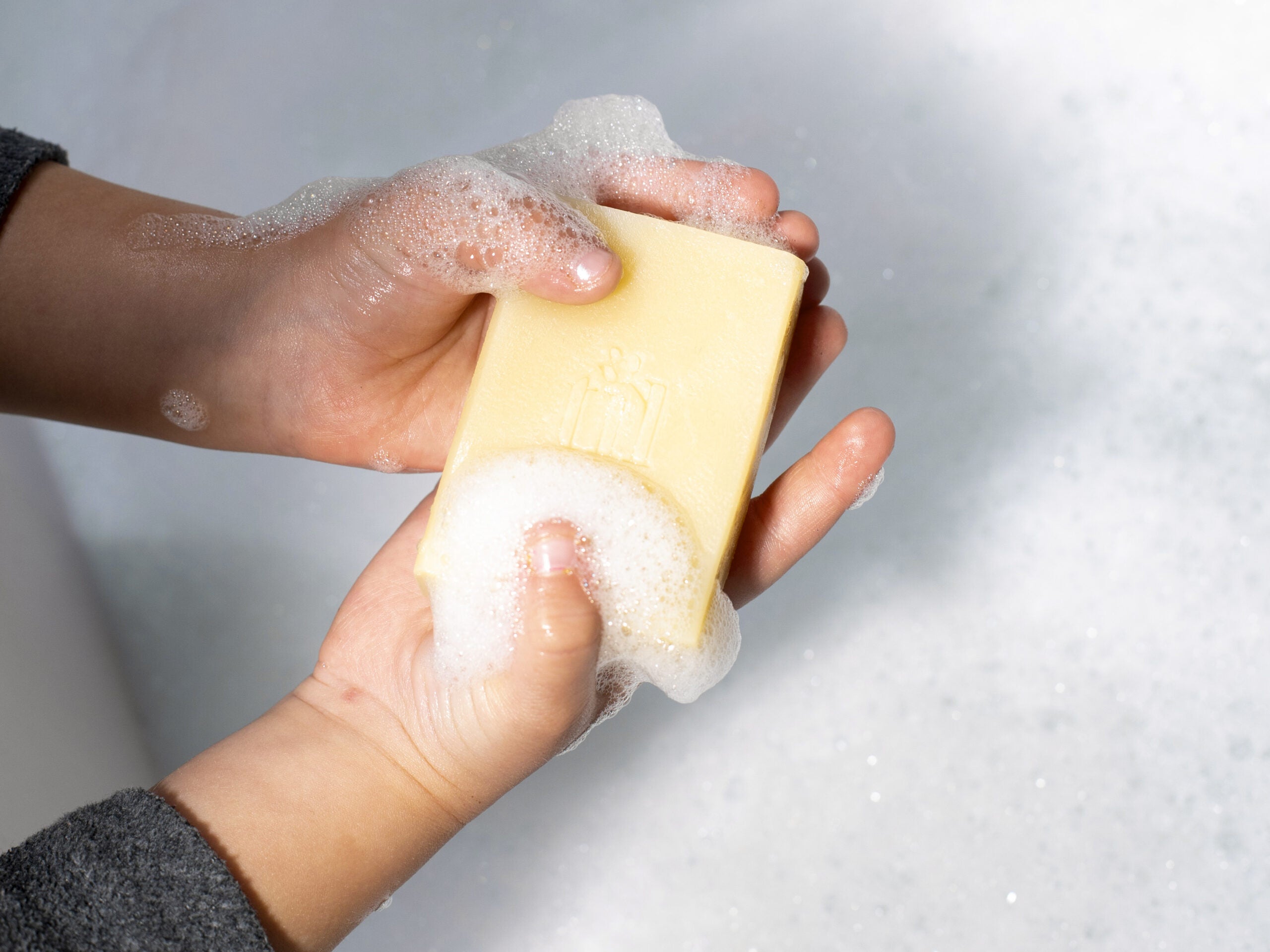
What if perfume was also therapeutic?
Olfaction is a primitive sense , even animal, because it is vital for many species, but it is also the most subtle and the only one directly linked to our brain . Little known, it was brought back to light in 2004 by the work of the Nobel Prize winners in medicine on the human sense of smell.
However, since the dawn of time, and until the 19th century, perfume was a medicine. This function was then forgotten, but is making a comeback for its therapeutic virtues on the mind and body.

The olfactory system
- A primitive goal: to warn us of danger
- 400 different olfactory receptors
- 10 million olfactory neurons on the olfactory mucosa at the back of the nose
- 1000 billion : number of different smells that we are able to distinguish
- 1 second: the duration of the journey of olfactory information in the brain, from its detection, to its perception and awareness.
- 3 stages between the nose and the brain: decoding, memorization, emotion
- When we inhale the air, the odorous molecules enter the nostrils, going to the back of the nose where the odor detectors , the olfactory neurons, which send a signal to the brain
- The olfactory bulb reads information and sends it to areas of the brain that are involved in memory
- 5th month of intrauterine life: the olfactory library is built through taste. It will be enriched throughout life.
Therapeutic perfume, return to the origins
In the history of perfume, we find 3 essential functions: honoring the gods, healing, seducing .
From Antiquity to Pasteur, perfume was the main medicine . We slathered ourselves with it and swallowed it like a medicine until the end of the 19th century, because it was supposed to fight against miasma.
The oldest recipe is that of kyfi in Pharaonic Egypt , which treated all kinds of illnesses: pulmonary, intestinal, hepatic, etc.
Myrrh was burned at sunset to calm anxiety and improve sleep , and in Ancient Greece , saffron was known to help you fall asleep. Hippocrates even said: “ perfume is a remedy for bad moods”.
Over the centuries, religious people played an essential role in this medicine through perfumes because they cultivated aromatic medicinal plants (garden of the simple) to treat the sick and also ran hospitals.
They had thus developed solid medical knowledge which they transcribed into manuscripts in order to ensure the transmission of their knowledge . Thus Hildegard of Bingen , a nun of the 12th century, had already written “the garden of health” with 300 plants listed.
It was with the great plague of 1348 (a quarter of the population in Europe disappeared) that the use of medicinal perfumes , supposed to cleanse, fight against miasmas, and protect against diseases , exploded. Water is strongly discouraged because it is suspected of opening the pores of the skin and thus promoting the infiltration of bad odors which could rot the organs. This is how perfume is used for washing and this is where the famous Water of the Queen of Hungary (1370) was born, which was used as a friction but also as a drink , the Carmelite water, Santa Maria Novella in Florence etc…, precursors of Eau de Cologne centuries later
Later, the court physician of Louis
In the 18th century, scented vinegars , prepared from flowers or spices, were used in aromatic water in the bath or in toilet vinegar for skin care.
In France, it was not until 1810 that pharmacy and perfumery were separated by a decree from Napoleon!

Today we are reconnecting with the past and traditions, and we are rediscovering the protective and therapeutic virtues of perfume, through olfactotherapy or aromatherapy.
It is also making its debut in hospitals , places where it was rather usual to hide bad odors...: chemo departments, neurology (stroke and head trauma), palliative care, maternity wards, operating rooms (decrease anesthetic products), Alzheimer centers (to trigger emotional feelings in apathetic patients).

Perfume, medicine for body and mind
- Feel to remember
In a hospital environment, therapy workshops olfactory have existed for more than 20 years, intended for victims of stroke or head trauma, and Alzheimer's patients. Thus to Garches hospital, olfactory workshops were created at the initiative of the CEW , in partnership with IFF (one of the main manufacturers of perfumes and aromas for the perfume and food industries). Patients, helped by olfaction professionals, succeed in re-taming their sense of smell , which helps them to resituate themselves in the present.
Patty Canac, olfactotherapist , says that patients smell dozens of smells, pleasant or unpleasant everyday scents, and perfumes, sometimes directly after coming out of a coma.
The objective is to “ stimulate memory using odors , either by leading the patient to identify them, or by encouraging the retrieval of autobiographical memories. This work also acts on language disorders and helps to improve them. The primitive sense of olfaction is directly connected to the limbidic brain (brain of emotions and memories); there is physical proximity between the two, only a small bone, called the cribriform plate, at the bottom of the nasal cavity, separates them” (Le Monde, Sens & Santé). “Smell is the only one of our 5 senses that puts memory before analysis ,” she recalls.
Because they do not pass through the intellect, but go directly to the seat of emotional memory , thus affecting affectivity, odors constitute a formidable tool for touching the unconscious.
Smells can thus bring back very old memories, even dating back to early childhood... this is the process described in the famous Madeleine by Proust .

- Feel to get better
These workshops have been extended to around fifteen medical establishments, to help cancer patients or suffering adolescents.
Studies show that odors have an influence on the nervous system, morale, sleep, anxiety, nausea or appetite, and they are used in hospitals, retirement homes and health centers.
By activating feelings of well-being, security and confidence , smells alleviate psychological suffering.
This is how olfaction enters the field of psychotherapy . According to Jeanne Doré, founder of the site auparfum.com and of Nez, “we have too often thought that smell brings us closer to animals even though they develop our intelligence and deserve real learning.”
Aromatherapy treats somatic problems (soothing stomach aches with basil for example), while aromachology touches the psycho-emotional domain, that is to say the influence of smells on behavior.
According to Hirac Gurden, director of neuroscience research at the CNRS, specializing in the functional study of the olfactory system, “studies are beginning to establish links between exposure to certain odors and unconscious reactions of the neurovegetative system (change in heart rate, dilation of pupils, etc.). Likewise, electroencephalograms show electrical signals markedly amplified or diminished by certain odors. This endorses traditional practices, a naturalistic and popular knowledge that we find as much in ancient Egypt as in Grasse,” affirms the researcher.
(Le Figaro Santé).

- Feeling to feel, proof by neuroscience
Professor Arnaud Aubert, doctor in neuroscience and psychophysiology at the University of Tours, for example demonstrated the “calming effects of fig flower water on muscle tension, cardiac activity and the voice after fifteen days of use. The fragrance effectively regulates stress and improves well-being” (Psychology).
Indeed, the link between emotions and smells is very close , and Professor Aubert and Francis Vial (Emospin) have developed a protocol to measure the emotional impact of a perfume based on 3 parameters:
- the respiratory rhythm, very involved in the perception of a
perfume : pleasant, it will trigger a slowing of the respiratory rate and an increase in the inspired volume . Unpleasant, he will limit inspirations, or even block them momentarily.
- The emotional charge transmitted by the voice ( prosody , or tone of voice)
- A psychometric analysis : choice of emotional attributes
This protocol was followed to measure the impact on emotions of the TiL perfume, our eau de toilette named "L’Eau qui Enlace":
- Concerning prosody , the TiL perfume obtains very significant results , showing a state of relaxation and appeasement associated with its olfactory discovery .
- The breathing rate is reduced by 15%, a very significant reduction as well and consistent with the idea of exploration : I explore the perfume, I breathe more slowly and I increase the volume inspired to absorb the smell more.
- For the psychometric analysis, the TiL perfume obtains a very important consensus on the positive facets of emotion. Are expressed: joy, relaxation and comfort, which shows a very high hedonic potential.

At TiL, we do not claim to treat, but on the other hand to provide, with a very sensory and deliciously scented universe , a little of that better life that we so need. Little moments of sweetness, serenity, comfort and pleasure , we know how to do this, taking your hand as you stroll through an avenue of flowering linden trees one early morning in June...


